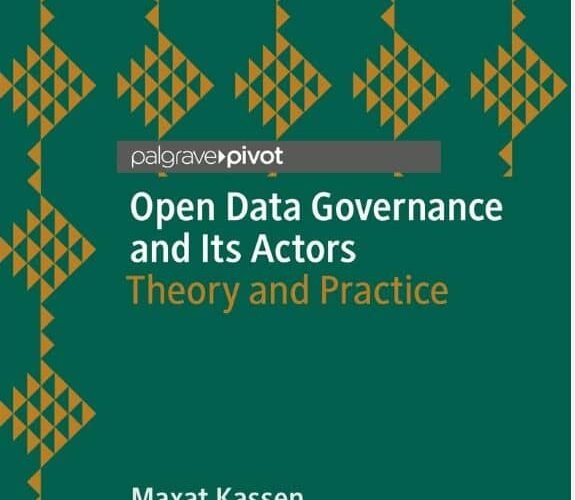Data-Driven Governance in Practice: Appraising Gov. Alex Otti’s Abia (2023–2025) through Kassen’s Open-Data Lens
Maxat Kassen’s Open Data Governance and Its Actors: Theory and Practice argues that credible reform happens when governments move beyond rhetoric to build “data value-chains”: publishing usable information, enabling intermediaries (media, civic tech, auditors) to interrogate it, and then translating that scrutiny into better policy. In this view, actors—not abstractions—do the work: executives who mandate disclosure, treasuries and CIOs who standardize formats, civil society that reuses data, and legislatures that codify norms. Judged against that framework, Abia State under Gov. Alex Otti shows many of the right institutional moves for an early-stage, sub-national open-data transition.
First, Kassen emphasizes “discoverability and reusability.” Abia’s publication of a 2024 Citizens’ Budget—a plain-language, machine-shareable summary of a ₦567.24 billion plan—meets that test. Citizens can see functions, outlays, and priorities without parsing a dense appropriation act, which is precisely the point of citizen-facing budget documents in open-government theory. The document’s existence signals an executive choice to be read, questioned, and compared over time—the catalytic precondition in Kassen’s model.
Second, Kassen insists that data must be tied to salient reforms that are legible to citizens. Abia’s repeal of luxury pensions for former governors and deputies in March 2024 fits that bill: a legal reform with clear fiscal and ethical logic that the public can verify and debate. It’s a move that converts a normative claim (“we are rebuilding fiscal integrity”) into a rule that survives administrations—exactly the kind of institutionalization Kassen argues turns disclosure into durable governance.
Third, open-data governance expects transactional systems—payment rails, registries, and portals—that reduce discretion and leakages. The Abia State Internal Revenue Service portal (abia.tax) is a core building block: a single front door for taxpayer onboarding, biometric verification, and e-payments. Digitized revenue administration is not glamorous, but in Kassen’s logic it is where “data becomes discipline”—the state sees its own base in real time, and citizens see rules rather than gatekeepers. Public demand notices and schedules, also published online, reinforce predictability.

Fourth, Kassen argues open data must be socially convertible—citizens feel effects in salaries paid, services delivered, and arrears cleared. Here, Abia’s payment plan for tertiary-institution salary arrears (reported at ₦17.6 billion) shows how fiscal transparency couples with distributive outcomes. One can disagree on pace or sequencing, but the linkage from published priorities to payroll relief is exactly the feedback loop open-government literature seeks to hard-wire.
Fifth, the theory values workforce incentives and culture, not just tech. Announcing and implementing rules that lift long-standing bottlenecks—such as the lifting of a decade-long promotion embargo at Abia Polytechnic—isn’t mere HR; it’s data-governance by another name, because talent markets react to credible, public commitments. Kassen describes such moves as aligning “actor incentives” with the transparency agenda so that systems don’t backslide once the spotlight shifts.
Sixth, Kassen is blunt that open data invites contention—media scrutiny, third-party estimates, even accusations. That tension is a feature, not a flaw, because it pressures governments to publish performance reports and reconcile numbers in public. In Abia’s case, debates over education spending and quarterly outturns have already spilled into the press and social channels; the correct response in the book’s logic is not defensiveness but deeper time-series reporting and reconciliation notes, so that the “use” phase of the data value-chain strengthens rather than weakens trust. Publishing the Citizens’ Budget and related reports is the right start; maintaining a regular cadence of quarterly budget-performance reports would complete the loop.
Seventh, Kassen stresses priority signaling. Abia’s 2024 plan tilted heavily toward capital expenditure—an 84% capex share in the proposal—telegraphing an infrastructure-first stance. Whether that mix is optimal is a legitimate policy debate, but in open-data governance the key is that the signal is auditable: the capex claim is documented, and subsequent releases can be tracked against it. That is how external actors—businesses, rating analysts, civic groups—convert government talk into measurable expectations.
Finally, the book’s normative core is institutional durability: do reforms survive personality and pressure? Otti’s administration has paired symbolic credibility moves (pension repeal) with systems that outlast press cycles (tax portal; citizen-facing budgets; arrears settlement frameworks). To stay within Kassen’s playbook, Abia should now (a) lock in open-format data standards for budgets, procurement, and debt; (b) publish quarterly performance dashboards that reconcile commitments to cash; and (c) codify open-data mandates across ministries, so disclosure is a rule, not an option. If those steps continue, Abia’s 2023–2025 period will stand not just as a reformist moment but as a structurally different governance regime.
On balance, judged by the criteria of discoverability, legal institutionalization, transactional digitization, social convertibility, incentive alignment, and cadence of go in disclosure set out in Kassen’s work, Abia under Gov. Otti has moved decisively from promise to platform. The benchmark in open-data governance is not perfection; it is provable trajectory. Abia’s trajectory—citizens’ budgets, pension-law repeal, digitized revenue, arrears repayments, and workforce normalization—is publicly checkable and, therefore, credibly reformist.
AProf Chukwuemeka Ifegwu Eke







